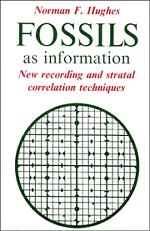Book contents
- Frontmatter
- Contents
- Preface
- Part A Problem of effectiveness
- Part B Proposed solution
- 3 Suggested new Paleontologic Data-Handling Code (PDHC)
- 4 Records are primary
- 5 Nomenclature/language of records
- 6 The Paleotaxon
- 7 Replacing the Genus
- 8 The Record package
- Part C Applications for information-handling
- Part D Further considerations
- Appendices 1 and 2: Worked examples of GOR and PTR forms
- Glossary
- References
- Index
3 - Suggested new Paleontologic Data-Handling Code (PDHC)
Published online by Cambridge University Press: 02 February 2010
- Frontmatter
- Contents
- Preface
- Part A Problem of effectiveness
- Part B Proposed solution
- 3 Suggested new Paleontologic Data-Handling Code (PDHC)
- 4 Records are primary
- 5 Nomenclature/language of records
- 6 The Paleotaxon
- 7 Replacing the Genus
- 8 The Record package
- Part C Applications for information-handling
- Part D Further considerations
- Appendices 1 and 2: Worked examples of GOR and PTR forms
- Glossary
- References
- Index
Summary
Purpose. The suggestions following in this and the next five chapters are designed to provide an alternative paleontologic data-handling scheme which is complete and consistent in itself, and is thus independent of existing arrangements while remaining compatible with them. It offers the possibility of achieving much greater precision of results than has been produced before in applications such as stratigraphic correlation; these results should then fully reflect the very large amounts of detailed information available from fossils and the potential strength now provided by automatic data-processing, both coupled with a sensible view of the adequacy of the Fossil Record (Paul 1985).
General method. A principal aim of the new scheme has been to take the necessary discipline of record-making back to the observation stages of the field and of the laboratory, where it can be free from the minutiae and legalities of nomenclature and from the weakly defined taxonomy associated with it. At the same time every effort has been made to avoid or to reduce the need for any central registration and validating authority for any recorded observations or taxa, and to cut out the customary delays of formal publication which are inappropriate to basic observation information.
- Type
- Chapter
- Information
- Fossils as InformationNew Recording and Stratal Correlation Techniques, pp. 21 - 24Publisher: Cambridge University PressPrint publication year: 1989



